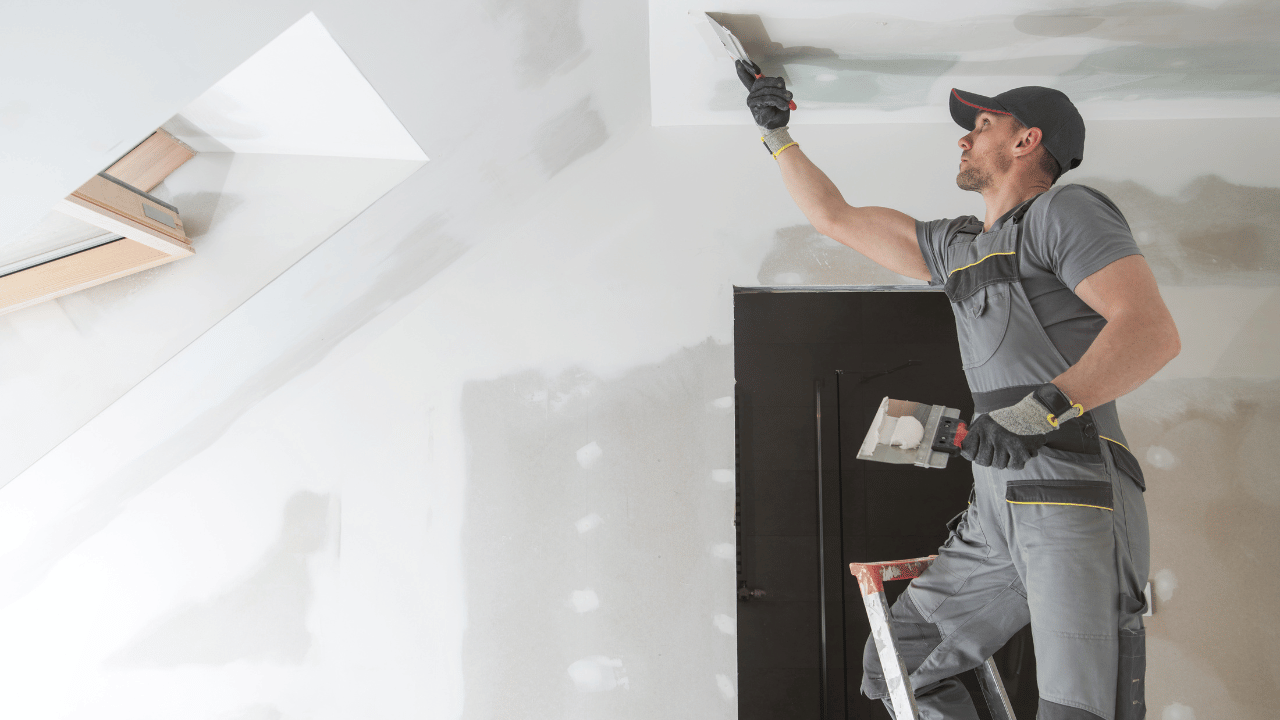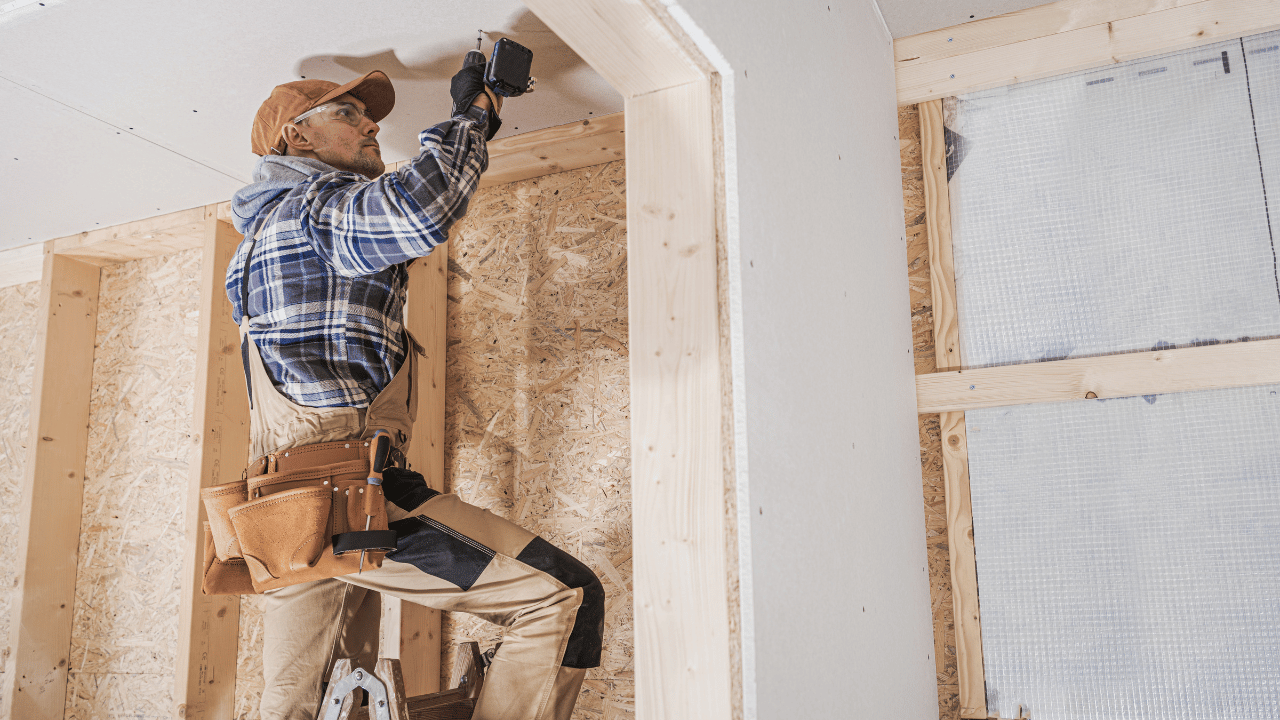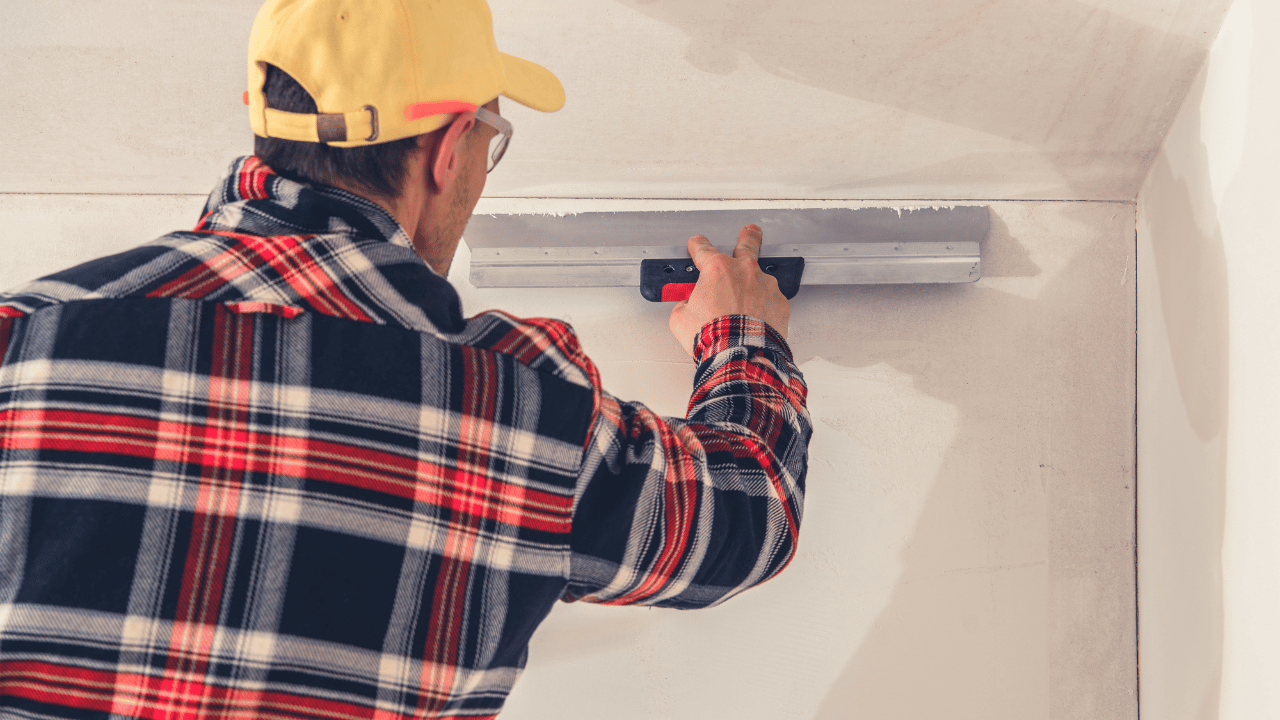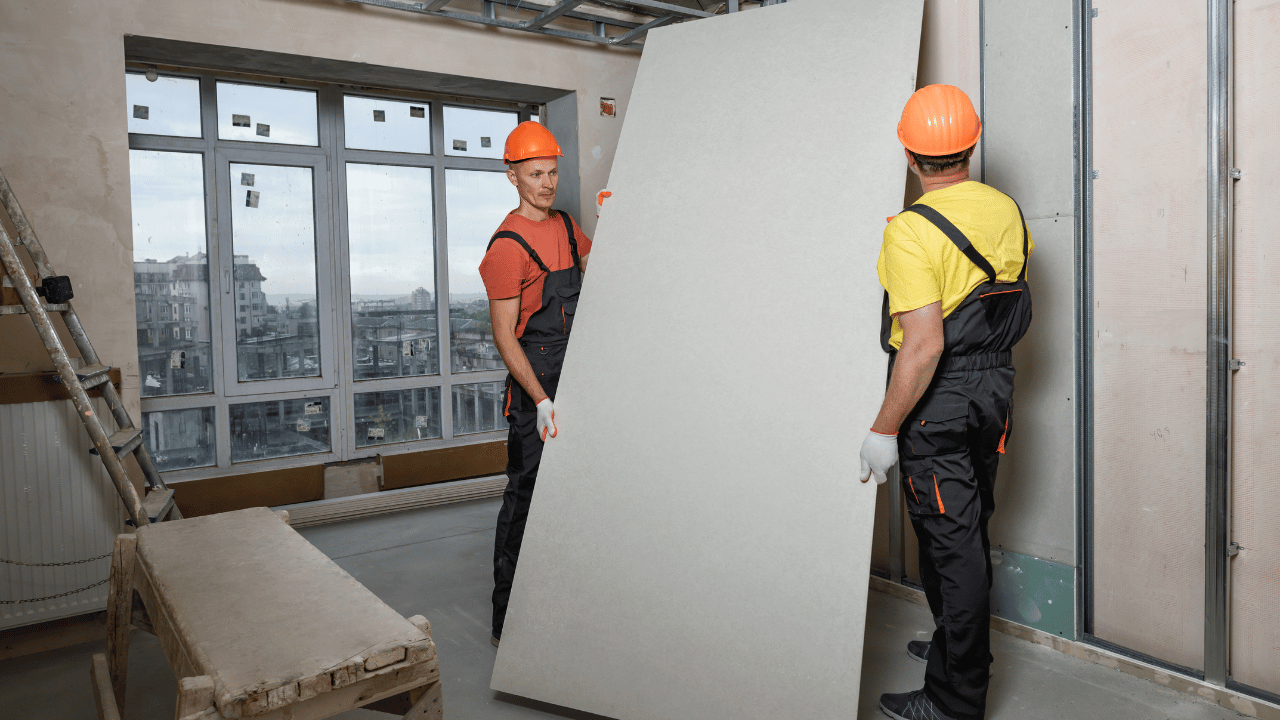Last Updated on October 21, 2023 by Pro Handyman Australia – Editorial Team
Unpredictable incidents can leave unsightly damages to our walls — from accidental holes to water damage or wear and tear that goes unnoticed until it’s too late. Such emergencies can disrupt the aesthetics of our homes or offices and may even pose safety risks. In these moments, quick and efficient solutions are paramount. Enter emergency drywall repair services. This invaluable service provides immediate relief to homeowners and businesses alike, ensuring that walls are not only restored to their former glory but also fortified against future damages. In this blog, we’ll delve into the importance of these services, what they entail, and why having a reliable provider on speed dial can be a game-changer.
Understanding Drywall Emergencies and Their Solutions
Unexpected accidents can result in unsightly damages to our walls. From unexpected collisions to unforeseen incidents, drywall can be vulnerable. However, with the right approach, many of these damages can be rectified. If you ever find yourself facing an emergency drywall repair situation, here’s a structured guide to walk you through the process.
Evaluating the Extent of the Damage
Before diving into repairs, it’s essential to gauge the extent and nature of the damage. The technique you employ for mending will largely depend on the size, location, and type of damage. Simple surface-level dents and cracks are relatively straightforward to fix. However, corner damages might pose a slight challenge given their design and structural components. And, if your drywall has succumbed to water damage, consider seeking professional help, as this often necessitates a more comprehensive repair approach.
Preparation: Assembling Your Toolkit

While every drywall issue might be unique, the tools and materials for most repairs remain consistent. For a broad range of repairs, ensure you have:
- A putty knife and a razor knife for precise cuts.
- Joint compound for filling and sealing.
- A comprehensive drywall patch kit.
- Measuring tools like a tape measure and pencil.
- Sandpapers of varying grits (80 and 120 are commonly used).
- Drywall tape and screws or nails to secure sections.
- Quality interior paint for finishing touches.
For specialized tasks, you might also need:
- Drywall or hacksaw for cutting.
- An electronic stud finder for accurate drilling and nailing.
- A pry bar, metal snips, and a drill or driver.
- A carpenter’s square for perfect alignments.
- Drywall corner beads for corner repairs.
Initiating the Repair: Cleaning and Patching
Begin your repair process by clearing away any debris or loose fragments from the damaged area. Once cleaned, use the joint compound to fill in minor breaches. For optimal results, overfill slightly and then even out the surface using a putty knife. Medium-sized holes might necessitate a drywall patch for effective sealing. For larger damages, consider cutting out the affected region and substituting it with a new piece of drywall. Once the joint compound application is done, allow it sufficient time to dry.
Achieving a Smooth Finish: Sanding the Repaired Area
Once your joint compound is completely dry, proceed to sand the area for a smooth finish. Exercise caution during this step; excessive sanding might strip away the compound or harm the paint.
The Final Touch: Painting the Repaired Section

With the structural integrity of your drywall restored, the final step involves aesthetic touch-ups. Painting over the repaired section ensures seamless blending with the rest of the wall. If you’ve retained paint from previous jobs, use that for a consistent finish. If not, seek assistance from color-matching experts to find the most compatible shade.
The Imperative of Seeking Professional Emergency Drywall Repair Services
At first glance, a dent or hole in your drywall might seem like a minor inconvenience, something you can address with a quick DIY patch. However, when it comes to emergency situations, the underlying implications of drywall damage can be far more extensive than what meets the eye. Here’s why availing professional emergency drywall repair services is not just advisable, but often necessary:

- Expert Assessment and Precision: Professionals can accurately assess the extent and root cause of the damage. Whether it’s a simple dent, water damage, or structural issues, an expert will know the best approach to repair the problem effectively and ensure it doesn’t recur.
- Safety First: Damaged drywall can pose risks, especially if there’s hidden mold or structural instability. Professionals have the necessary equipment and know-how to handle such situations safely, ensuring that neither the inhabitants nor the property are put at risk.
- Time Efficiency: Emergency implies urgency. Professionals have the tools, materials, and expertise at their fingertips, ensuring that repairs are executed swiftly without compromising on quality.
- Holistic Solutions: Beyond the visible damage, there might be underlying issues such as plumbing leaks or pest infestations. A professional service not only addresses the immediate concern but can also identify and rectify these ancillary problems.
- Seamless Finish: One of the challenges with drywall repair is ensuring the repaired section blends seamlessly with the rest of the wall in texture and color. Experts possess the skills to achieve this finish, ensuring there’s no discernible difference between the repaired section and its surroundings.
- Value Preservation: Your home is an investment. Amateur repairs can decrease the aesthetic and monetary value of your property. Professional repairs, on the other hand, ensure that the integrity and value of your property are maintained or even enhanced.
- Cost-Effective in the Long Run: While DIY might seem cheaper initially, improper repairs can lead to recurring issues and escalating costs. Professional services might have an upfront cost, but they can save homeowners money in the long run by providing lasting solutions.
- Warranty and Peace of Mind: Many professional services offer warranties on their repairs. This not only reflects their confidence in the quality of their work but also provides homeowners with peace of mind, knowing that any subsequent issues related to the repair will be addressed.
In essence, drywall might seem like a simple aspect of home construction, but its integrity is paramount to the aesthetics, safety, and value of a property. When faced with emergency drywall issues, turning to professionals ensures a comprehensive, efficient, and high-quality solution.
Evaluating the Drywall Damage
Before diving into any repair actions, it’s essential to thoroughly assess the extent and nature of the drywall damage. Your repair methodology should be determined by the damage’s origin, location, and severity. Superficial blemishes such as minor dents, cracks, and punctures are relatively simple to mend. However, corner damages can be more complex due to their structure and the involvement of corner beads. Notably, if the drywall damage has been caused by moisture or water, the repair process becomes intricate, and it might be more appropriate to seek professional assistance. After you’ve comprehensively understood the challenge at hand, you can move onto the preparatory phase.
Assembling Essential Repair Tools and Materials While the specifics of every drywall damage may differ, the fundamental tools and materials for repair remain quite constant. Although for more specialized requirements, consider adding:
- A drywall saw or hacksaw
- An electronic stud finder and pry bar
- Metal snips, drill or driver, and carpenter’s square
- Drywall corner beads
Hole Repair: Cleaning and Filling With tools at the ready, commence by thoroughly clearing any debris or fragments from the damaged area. This ensures a clean foundation to introduce the joint compound. When filling the hole, apply a slightly generous amount of compound and level it with your putty knife to ensure the repaired section is nearly even with the rest of the wall. If dealing with medium-sized punctures, a drywall patch might be necessary for adequate repair. For extensive damage, consider excising the affected segment and substituting it with new drywall before finalizing the fix. Regardless of the repair’s scale, allow the wet compound adequate drying time, which might vary based on the mix, volume, ambient conditions, and other factors.
Smoothening the Repaired Area Once the joint compound has thoroughly dried, it’s time to refine the surface. Gently sand the repaired section to attain a smooth finish, ensuring you don’t exert excessive force to avoid removing too much filler or damaging the paint layer.
Concealing the Repair with Paint With the structural integrity of the drywall restored, the final step is aesthetic refinement. Ensure the paint you employ harmoniously blends with the wall’s existing shade and texture. Utilizing leftover paint from prior jobs is ideal for this. If that’s not available, and you’re uncertain about the wall’s exact paint type, consider seeking assistance from color matching experts to ensure a seamless finish.
Determining the Route: DIY or Professional Assistance?
Understanding when to tackle a drywall repair by yourself and when to call in experts is essential for optimal results. Often, the magnitude of the repair becomes a deciding factor.

Minor Repairs: The DIY Approach For trivial damages like nail holes or minute imperfections, managing the repair on your own is generally feasible. A simple visit to a home improvement outlet will provide you with the requisite spackle to address these minor concerns. The process is straightforward, and with a touch of precision, you can achieve commendable results.
Challenges with DIY for Larger Repairs However, larger, more intricate repairs present challenges that sometimes surpass the expertise of an average DIY enthusiast. Some common pitfalls that people encounter include:
- Inconsistencies in Spackling: Inaccurate layering or inadequate sanding can leave the spackle with bumps and cavities. These imperfections may not be immediately evident, especially during the sanding phase, as they can be masked by the accumulation of particle dust. Yet, the moment you introduce paint onto the repair, these inconsistencies become glaringly obvious.
- Issues with Edging: Proper sanding and spackling of drywall edges demand both the right equipment and a considerable amount of expertise. Without the benefit of extensive experience, there’s a propensity to leave persistent bumps and uneven edges on the wall.
- Neglecting the Need for Patching: There’s a prevailing misconception among some DIYers that spackle alone is sufficient for all kinds of holes or indentations. Applying spackle to areas that genuinely require patchwork can lead to the repair deteriorating or cracking over time.
Given these potential pitfalls, it’s advisable to engage professional drywall specialists, especially for significant damages. They bring to the table both the skills and the tools needed to ensure the repair is seamless and enduring.
Conclusion

Every home, no matter how meticulously maintained, can face unexpected incidents that may damage its walls. Drywall, despite its sturdy appearance, is susceptible to a myriad of potential mishaps, ranging from accidental impacts to water infiltration. While minor imperfections might seem inconsequential, neglecting them or opting for quick, amateur fixes can lead to compounded issues over time, both aesthetically and structurally. Emergency Drywall Repair Services stand as the unsung heroes in such situations. They not only restore the wall’s physical integrity but also ensure that the sanctity and safety of one’s living space remain uncompromised. In a world where the nuances of home maintenance can get overwhelming, the expertise and promptness offered by these services are invaluable. Engaging with them means entrusting your home to skilled hands, ensuring timely interventions, seamless repairs, and the longevity of your cherished home spaces.
